
- Company overview The heart of SMC Vision & Philsophy Partnership Certifications Company culture
- Our service Design and Engineering Maintenance and Service Examine Production Line Upgrade and Transformation Storage and Logistics Processing, Trading and Distributor
- Management Our history Global responsibility Info Center
- Procurement center Internship
- Metal Steel Products Stainless Steel Products Aluminum Products Copper Products Galvanized Steel and PPGI Special Alloy Building Material
- Containers ISO Standard Container Equipment Container Storage Container Refrigerated/Reefer Container Offshore Container Container House Tank Container Container Fittings Container Trailer
- Gas Cylinder & Fire Extinguisher Cryogenic Liquid Cylinder Oxygen Gas Cylinder Storage Tank CNG Gas Cylinder LPG Gas Cylinder Hydrogen Gas Cylinder Nitrogen Gas Cylinder Industry Gas Cylinder Fire Extinguisher
- Metal Machinery Forming Machine Cutting Machine Processing Machine Bending Machine Block Machine Other Machinery Motor Spare Parts
- Mechanical Products Miscellany Mooring Equipment Marine Equipment Vehicle Industry Pressure Vessel Conveyor Belt Laser Equipment Bearing
- Electrical System Power Distribution Automation Electrical Cable Solar Power System Electric Protection System Transformer Production Line Lighting System
- Project Plastic Pipes and Pipe Fittings Fiberglass Reinforced Plastic Pontoon System
Aluminum Busbar/ Bus Bar
Shanghai Metal Corporation is a leading aluminum busbar manufacturer and supplier.
In electric power distribution, a busbar (also bus bar) is a metallic strip or bar, typically housed inside switchgear, panel boards, and busway enclosures for local high current power distribution. They are also used to connect high voltage equipment at electrical switchyards and low voltage equipment in battery banks. They are generally uninsulated, and have sufficient stiffness to be supported in air by insulated pillars. These features allow sufficient cooling of the conductors, and the ability to tap in at various points without creating a new joint.
We SMC can supply Aluminum busbar, Copper clad aluminum busbar, and Tin-plated aluminum busbar. It has ideal properties for lightness, cost-effectiveness, conductivity, corrosion-resistance and more. Copper clad aluminum busbar is also called copper aluminum composite busbar. The cladding copper helps to increase the conductivity. By plating tin on the surface of copper clad aluminum busbar, it turns to Tin-plated aluminum busbar, and it helps to improve corrosion resistance.
If you want to know more about our Aluminum busbar, Copper clad aluminum busbar, Tin-plated aluminum busbar, Aluminum Parallel Flow Micro Channel Flat Tube, please feel free to contact us. We will reply to you within 24 hours.
-
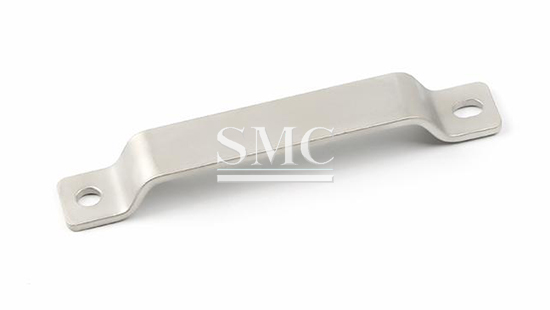
-

1) Light-weight
2) Strong combination of copper and aluminum
3) Strong Conductivity
4) Good ductility
5) Good corrosion resistance
-

1) Busway, switchgear
2) Control cabinet
3) Transformer
4) Safety switch, vacuum switch
5) Relay system, rail power supply system, motor control center
6) Electrode correction coil, reactor and other windings
7) Railway traction equipment
8) High, medium and low voltage distribution cabinet, high and low voltage distribution cabinet conductive row
9) Generator sets and substations
10) High and low voltage busbars, busbars, touch-slip lines
11) Various copper and aluminum transition joints
-
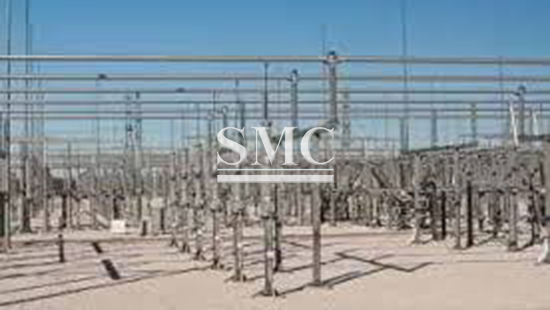
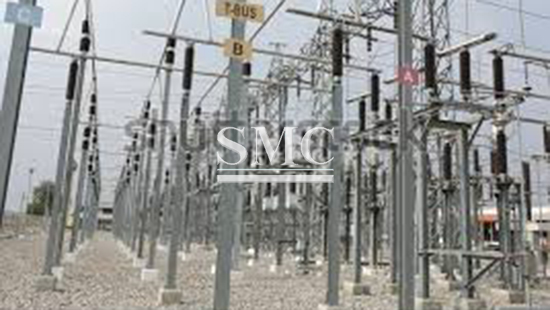
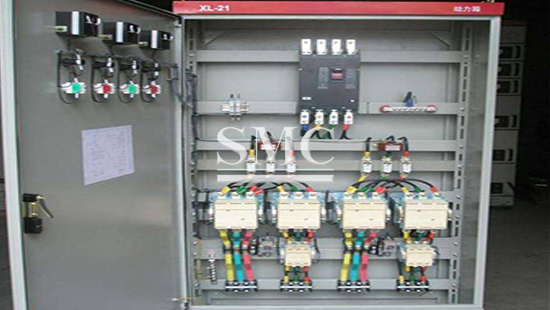
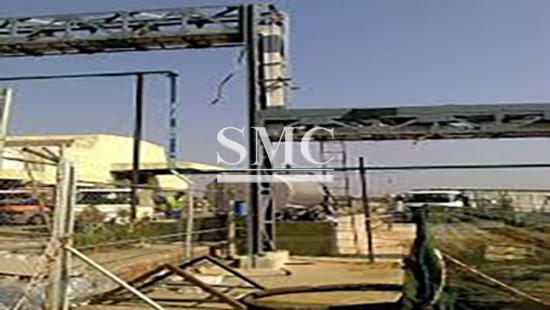
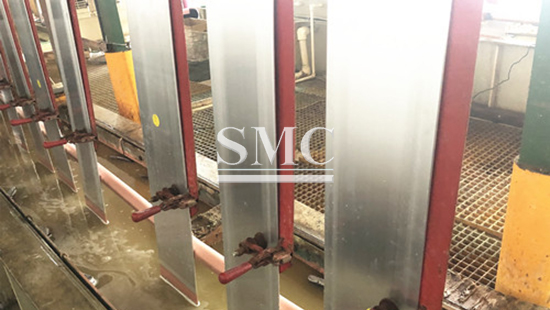
Technical Information of Aluminum Busbar:
Mechanical Properties of Aluminum Bus Conductor and Related Alloys
(The Aluminum Association ; ASTM B 236, B 241, and B 429; and Manufacturer’s Listings)
|
Product |
Alloy and Temper |
Thickness in |
Tensile Strength (ksi) |
Typical |
Typical Yield |
Typical(a) |
|
|
Minimum |
Minimum |
||||||
|
Extruded rod, bar tube, |
1350-H111 |
All |
8.5 |
3.5 |
|
|
35.0 |
|
6101-T6 |
0.125-0.500 |
29.0 |
25.0 |
32.0 |
28.0 |
15.0 |
|
|
6101-T61 |
0.125-0.749 |
20.0 |
15.0 |
|
|
|
|
|
6101-T63 |
0.125-0.500 |
27.0 |
22.0 |
14.0 |
11.0 |
|
|
|
Extruded pipe(c) |
6061-T6 |
Pipe size 1.0 & |
38.0 |
35.0 |
45.0 |
40.0 |
10.0 min |
|
Rolled bar |
1350-H12 |
0.125-1.000 |
12.0 |
8.0 |
14.0 |
12.0 |
|
|
Sawed-plate bar or sheet |
1350-H112 |
0.125-0.499 |
11.0 |
6.0 |
|
|
10.0min |
|
Rolled sheet |
1350 |
0.020-0.249 |
8.0 |
|
12.0 |
4.0 |
20-30 min |
|
1350-H16 |
0.020-0.125 |
16.0 |
|
18.0 |
16.0 |
2-4 min |
|
|
Cast Alloy for Bus |
1350-F |
1 in. And up |
|
|
8.5 |
3.5 |
35.0 |
|
Cast Alloy for Fittings |
A356.0-T61 |
|
37.0 |
|
|
|
5.0 |
Packaging of Aluminum Busbar:
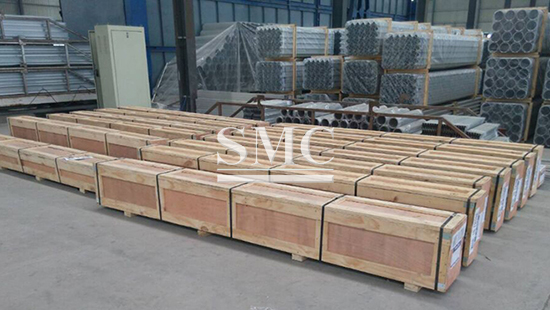
here
for
price


















